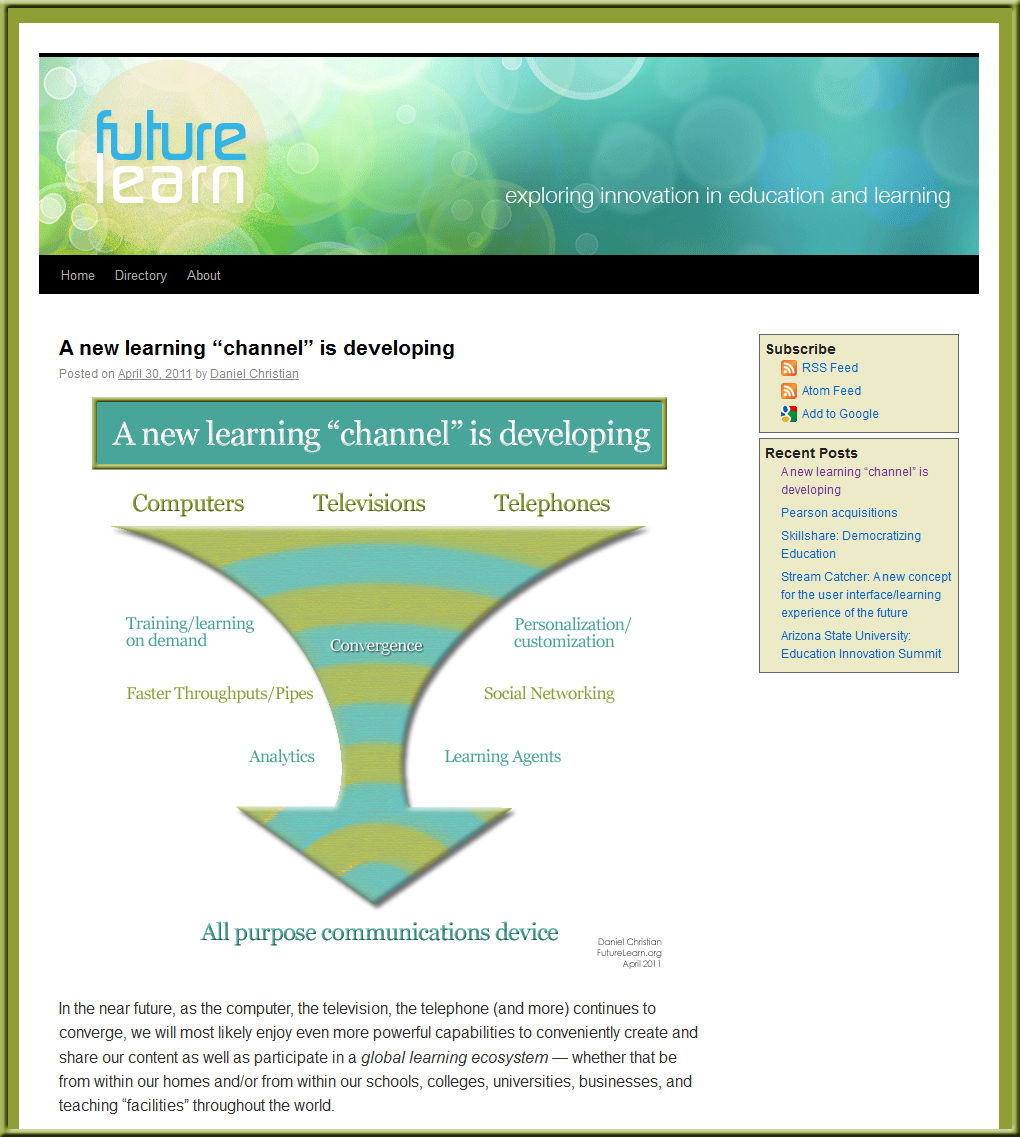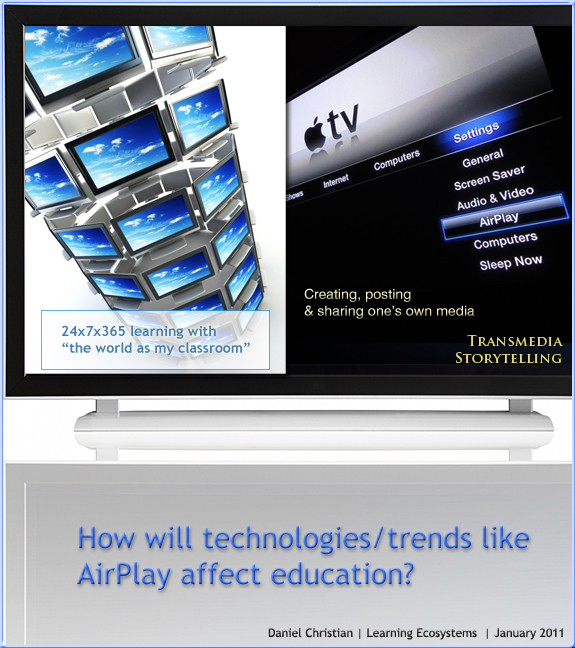Also see:
From DSC: re: Adobe’s Project Context:
This is the type of hardware/software combination that I’ve been hoping for and envisioning! Excellent!
It appears to be the type of setup whereby students could quickly and easily collaborate with one another — in a face-to-face setting (and ideally in remote locations as well) — by not just displaying files but also being able to share files with one another. Files can be sent up to the interactive, multi-touch displays as well as to an interactive table. So it’s not just displaying files, but actually sharing files and being able to collaboratively work on a project.
Eventually, I see this being able to be done in your living room. What if MOOCs could integrate this type of web-based collaboration into their projects?
But for now, this is a HUGE step forward in this vision. Great work Adobe! This is innovative! Very helpful!
Example screenshots:
.
.
.

..
Also see:
.
.
.
.
Report: 6 of 10 US broadband households have connected TVs— from appmarket.tv by Richard Kastelein
.Also see:
.
From DSC:
Learning from the Living [Class] Room continues to move forward. What I said out at FutureLearn.org (a different site than what’s out there today) in April 2011 continues to come to fruition:
.

Some other graphics that come to mind:

.

.
![The Living [Class] Room -- by Daniel Christian -- July 2012 -- a second device used in conjunction with a Smart/Connected TV](http://danielschristian.com/learning-ecosystems/wp-content/uploads/2012/07/The-Living-Class-Room-Daniel-S-Christian-July-2012.jpg)
.
Innovation U — from Southern New Hampshire University by Michelle E. Dunn, Editor
Excerpt:
Blowing Up the Business Model
SNHU has a history of innovation that includes establishing satellite campuses and launching a groundbreaking three-year Honors Program in Business. But more recent initiatives have placed SNHU at the forefront of a movement to fundamentally change American higher education and earned it acclaim from the noted business magazine Fast Company, which placed SNHU 12th on its recent World’s 50 Most Innovative Companies list. Ranked alongside business giants such as Apple, Google, Facebook and Starbucks, SNHU was the only university on the list.
In the Fast Company article highlighting SNHU’s forward thinking, President Paul LeBlanc acknowledged that innovation is imperative to survival in a rapidly changing higher education landscape.
“We want to create the business model that blows up our current business model,” he told the magazine, “because if we don’t, someone else will.”
…
The Innovation Lab
Imagine a new education model that would enable students to earn an SNHU associate degree for less than $3,000 per year.
Making that model a reality is the goal of the SNHU Innovation Lab, an educational incubator that is working to reduce costs, increase access and provide transformational experiences for students who have been marginalized by traditional higher education.
Established last November and staffed by four SNHU academic and technology experts, the Innovation Lab is spearheading the Pathways Project, an initiative that will seek to educate 5,000 disadvantaged students in the next five years. Slated to launch this fall, the project’s pilot degree program will apply a competency-based approach that leverages technology, community support, social networking and strong assessment.
Also see:
40 years coming, the revolution is here — from gettingsmart.com by Tom Vander Ark
Excerpt:
Moe sees learners creating a “personalized knowledge portfolio,” an unbundled sequence of learning experiences from multiple providers.
Moe sees an innovation ecosystem emerging, and calls it KaizenEDU. In this emerging ecosystem, it’s the “return on education” that matters. Moe argues the entrepreneurs that help create great learning gains are the ones that will create great shareholder value.
Healthcare gives us a picture of what that could mean for edtech. In 1970 there were 3 companies worth more than $1 billion. Last year, health care made up 13% of U.S. GDP and there were 398 companies with a market cap of more than $1 billion. Education is about 9% of GDP but there are only 5 public companies worth more than $1 billion. The difference is a result of dramatic under investment in R&D, but that’s changing!
…
The three emerging areas requiring more attention, according to Shelton, are early learning tools and resources, summer and out of school learning, and course redesign in higher education.
Dual screen: The evolution of the second screen — from blog.brightcove.com by Albert Lai
Excerpt (emphasis DSC):
Educational Gamification
In a previous post, we asked readers to suggest their ideas for dual screen applications. One of the more intriguing responses was the suggestion to create companion educational games to accompany associated video content.
In a dual screen experience, as video content is displayed on the television, the application can engage the viewer with relevant and education activities, from content reinforcement to spelling to trivia to memory “games.” One can imagine an interactive amalgamation of Dora the Explorer, Where in the World Is Carmen Sandiego?, and Schoolhouse Rock!

.
.
![The Living [Class] Room -- by Daniel Christian -- July 2012 -- a second device used in conjunction with a Smart/Connected TV](http://danielschristian.com/learning-ecosystems/wp-content/uploads/2012/07/The-Living-Class-Room-Daniel-S-Christian-July-2012.jpg)
Addendum on 4/8/13: